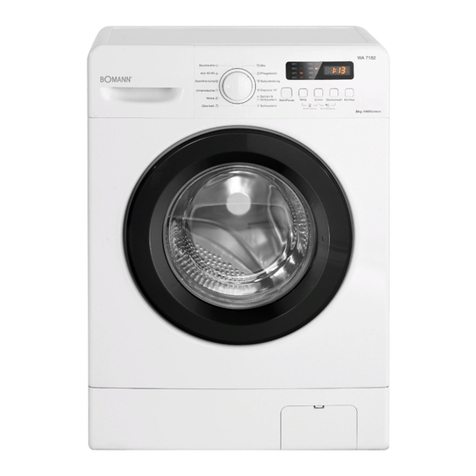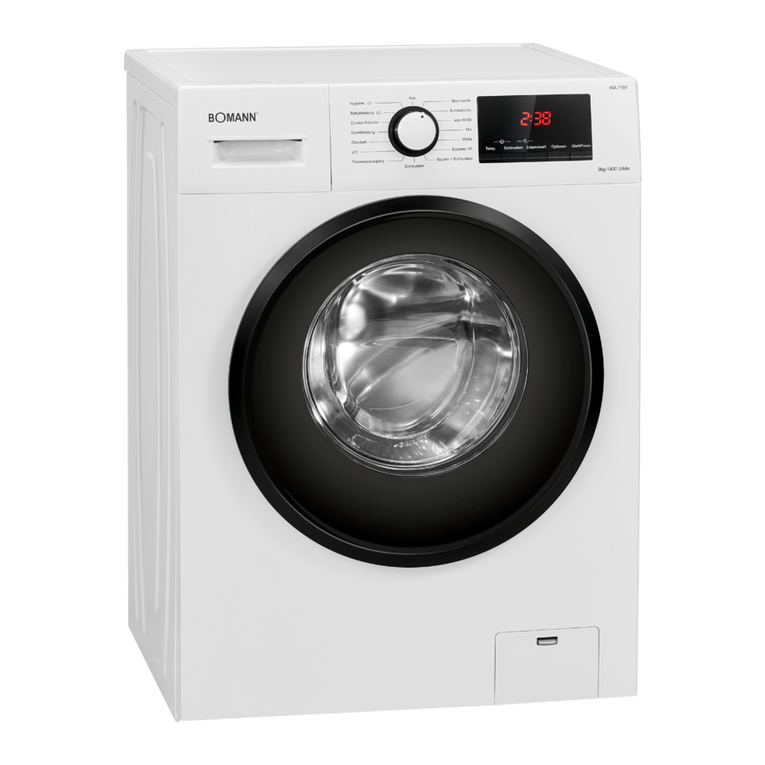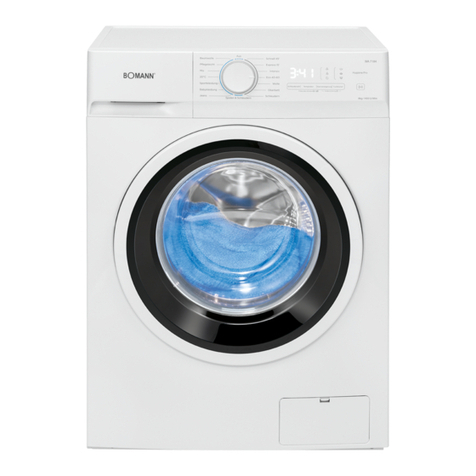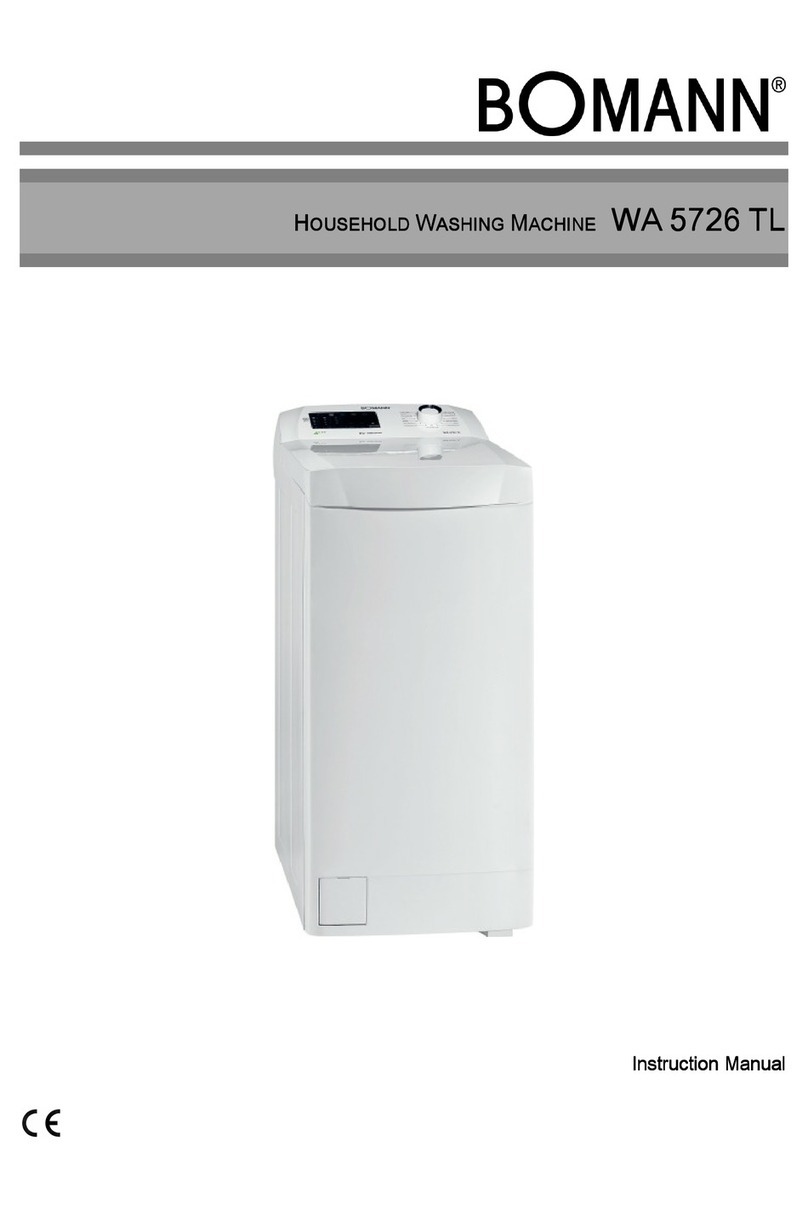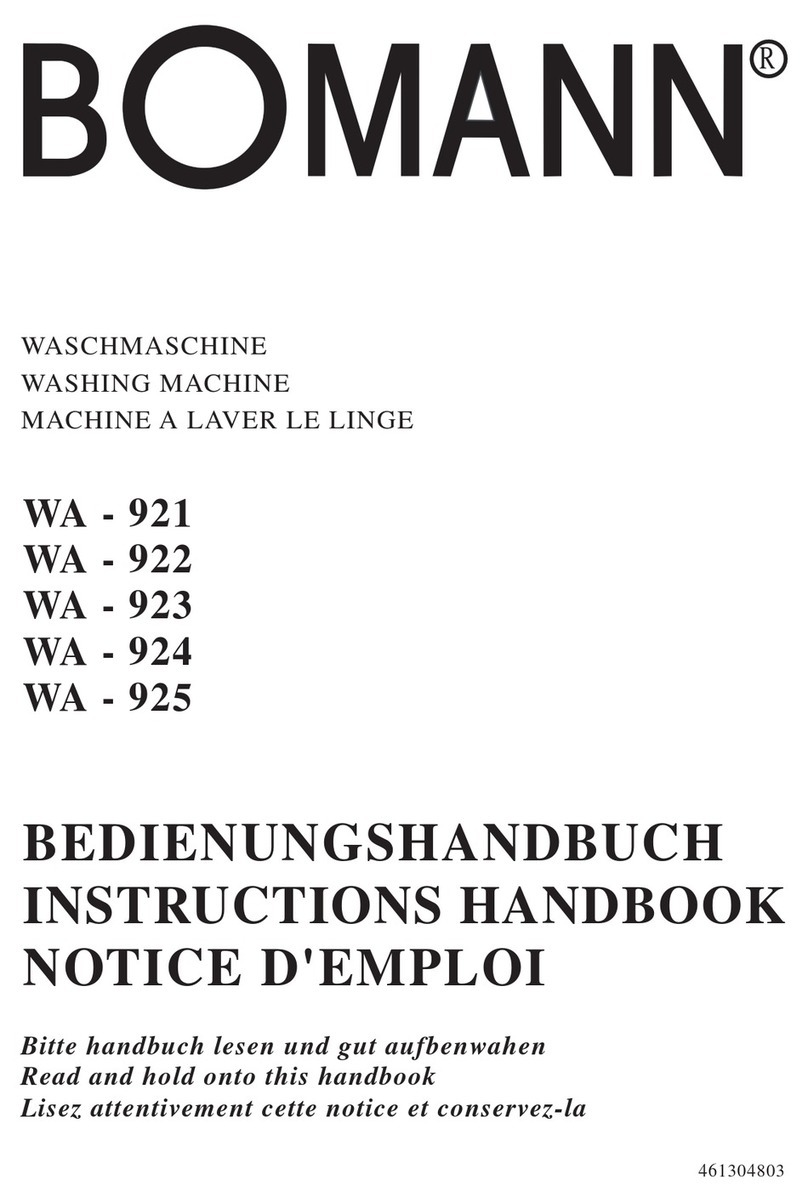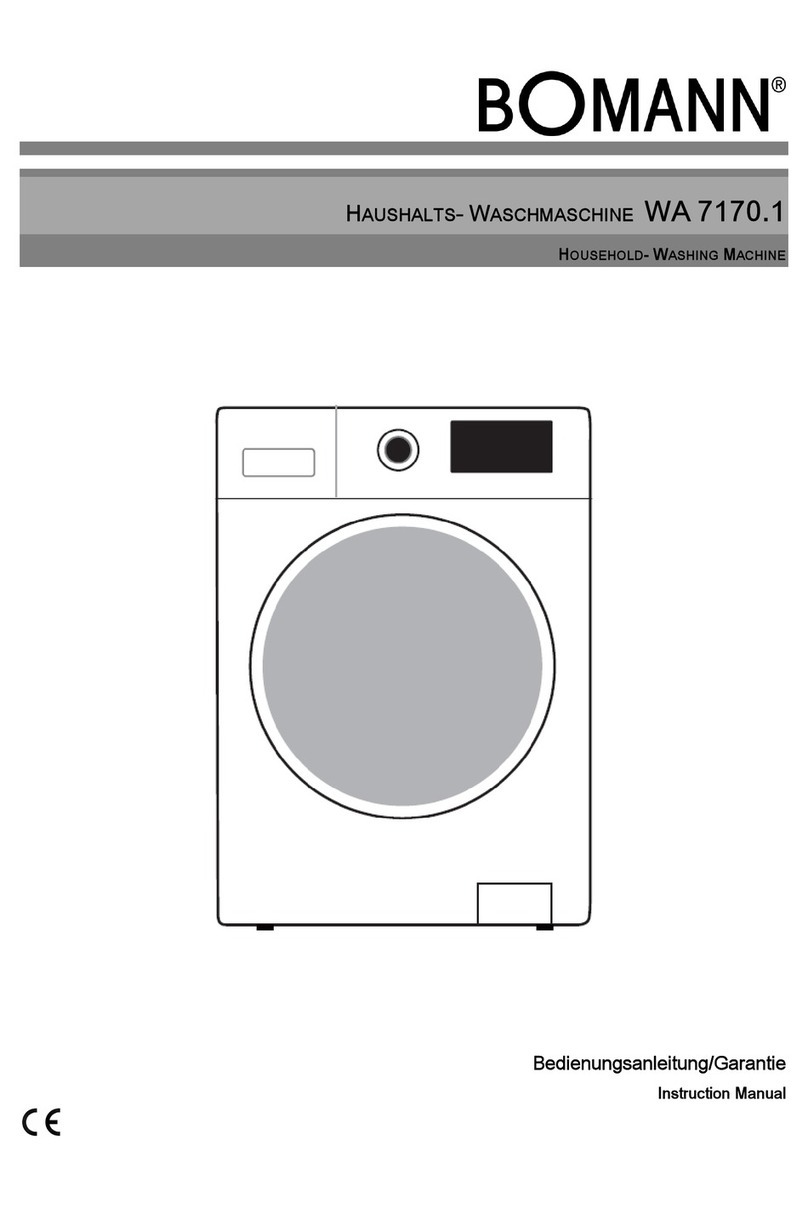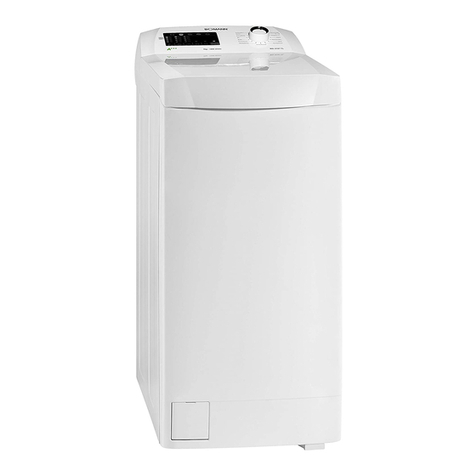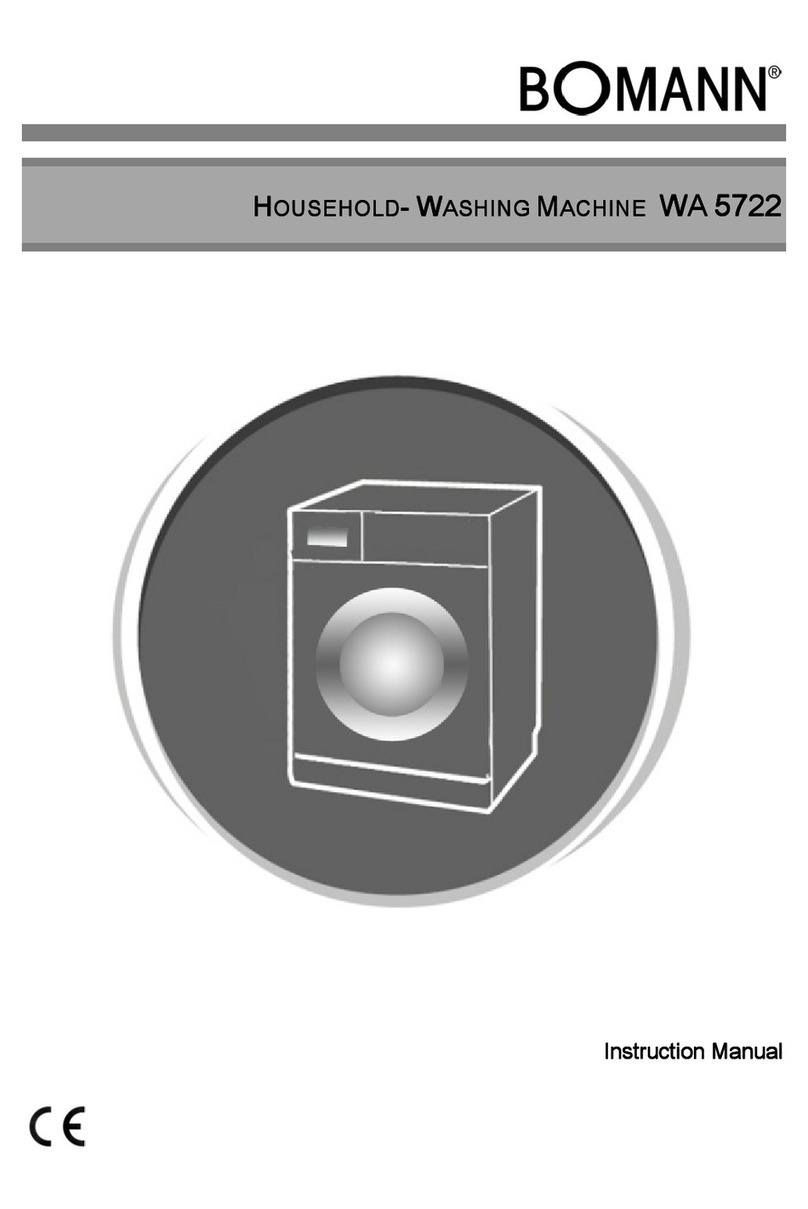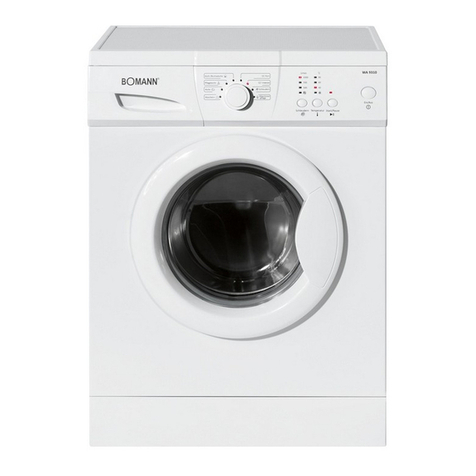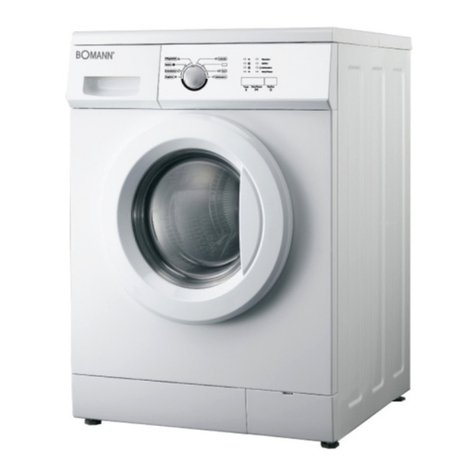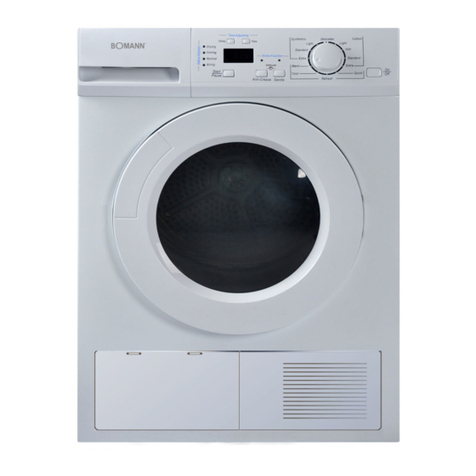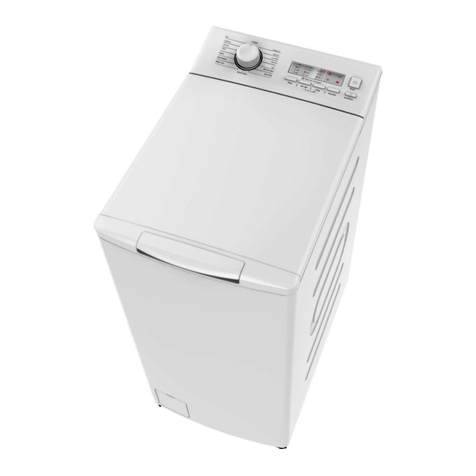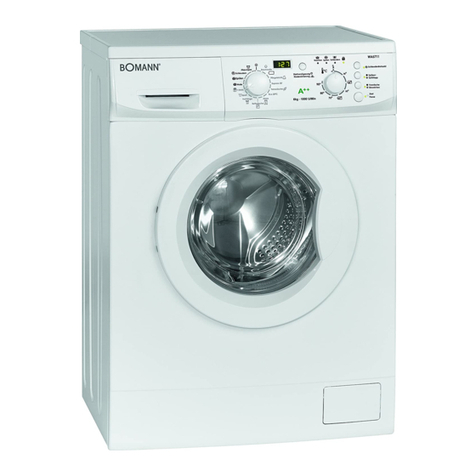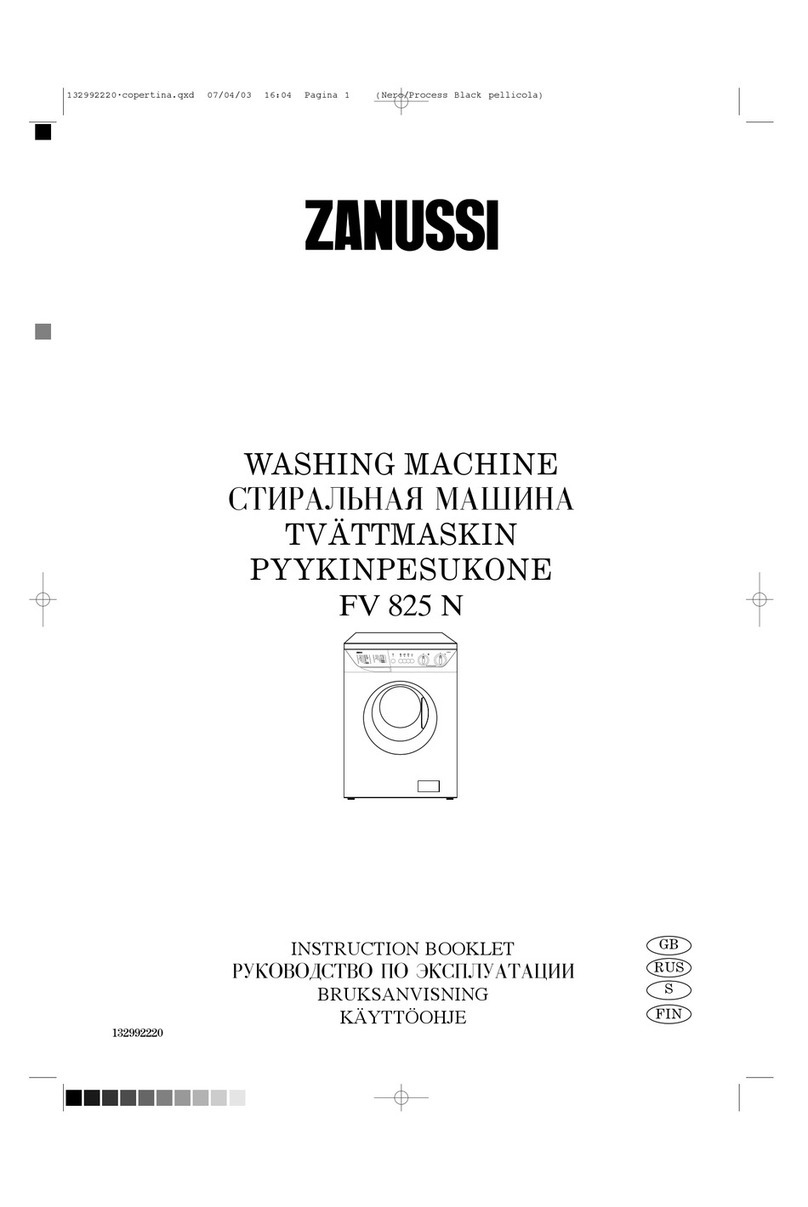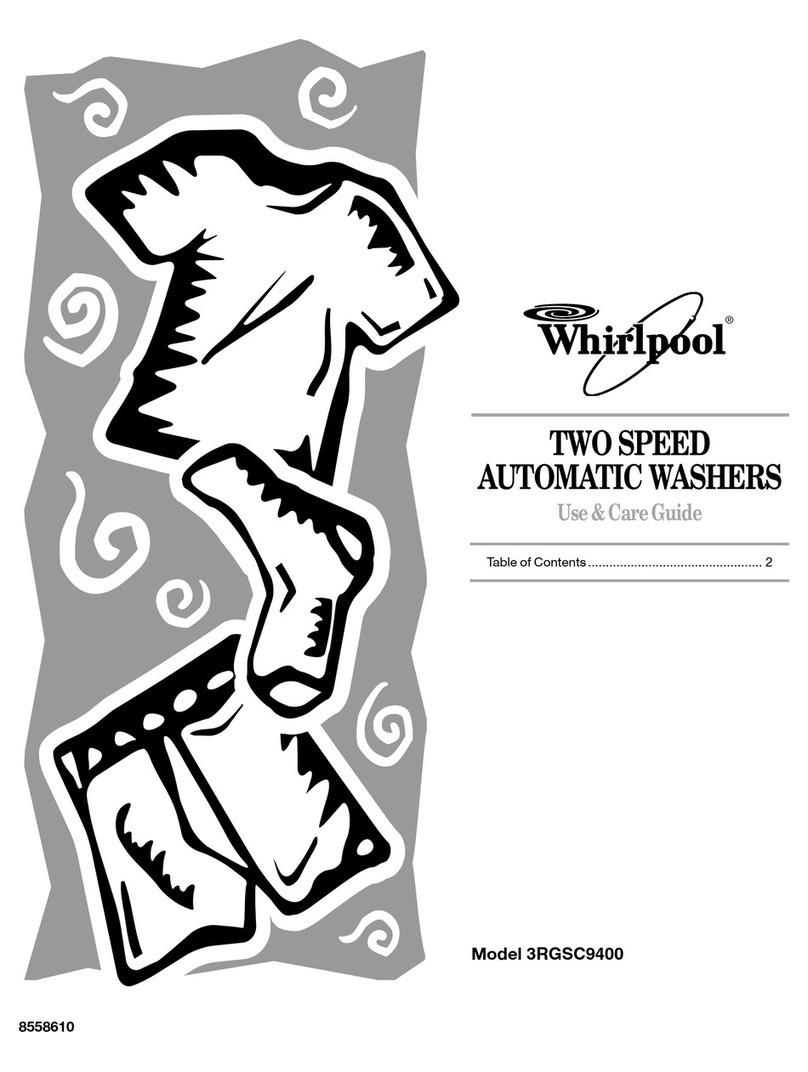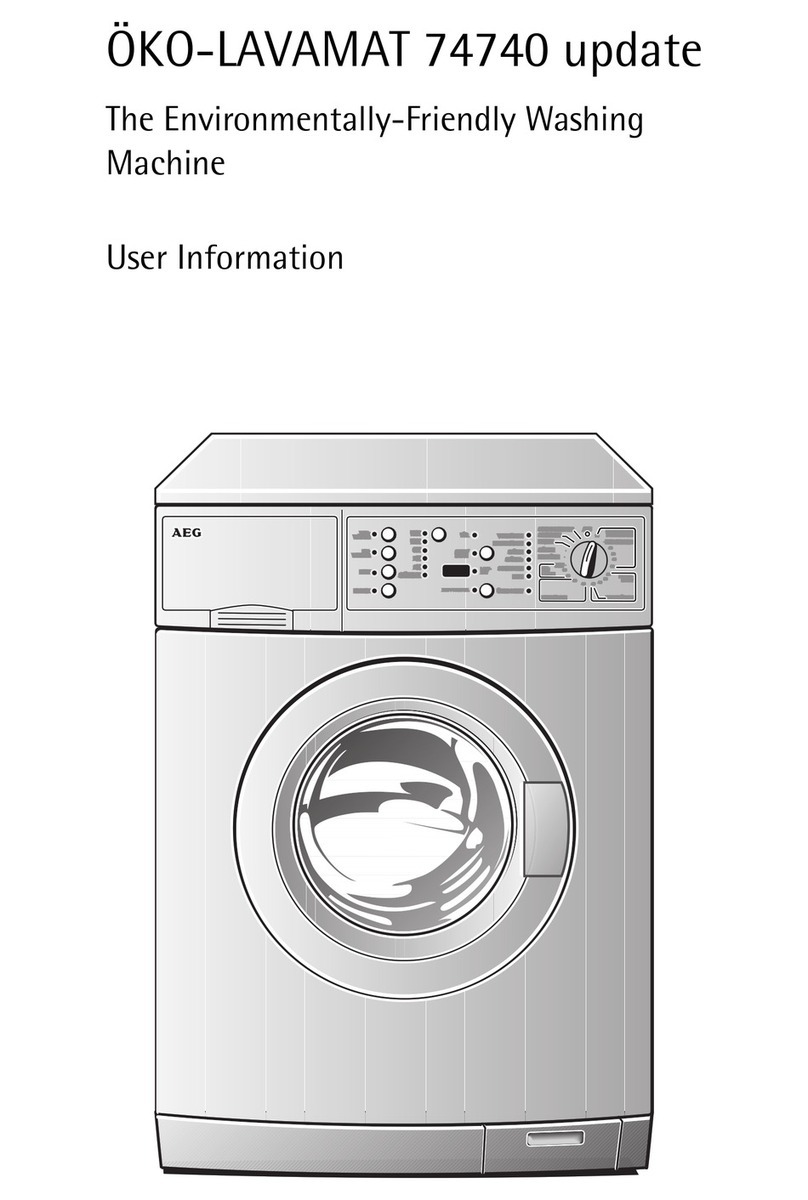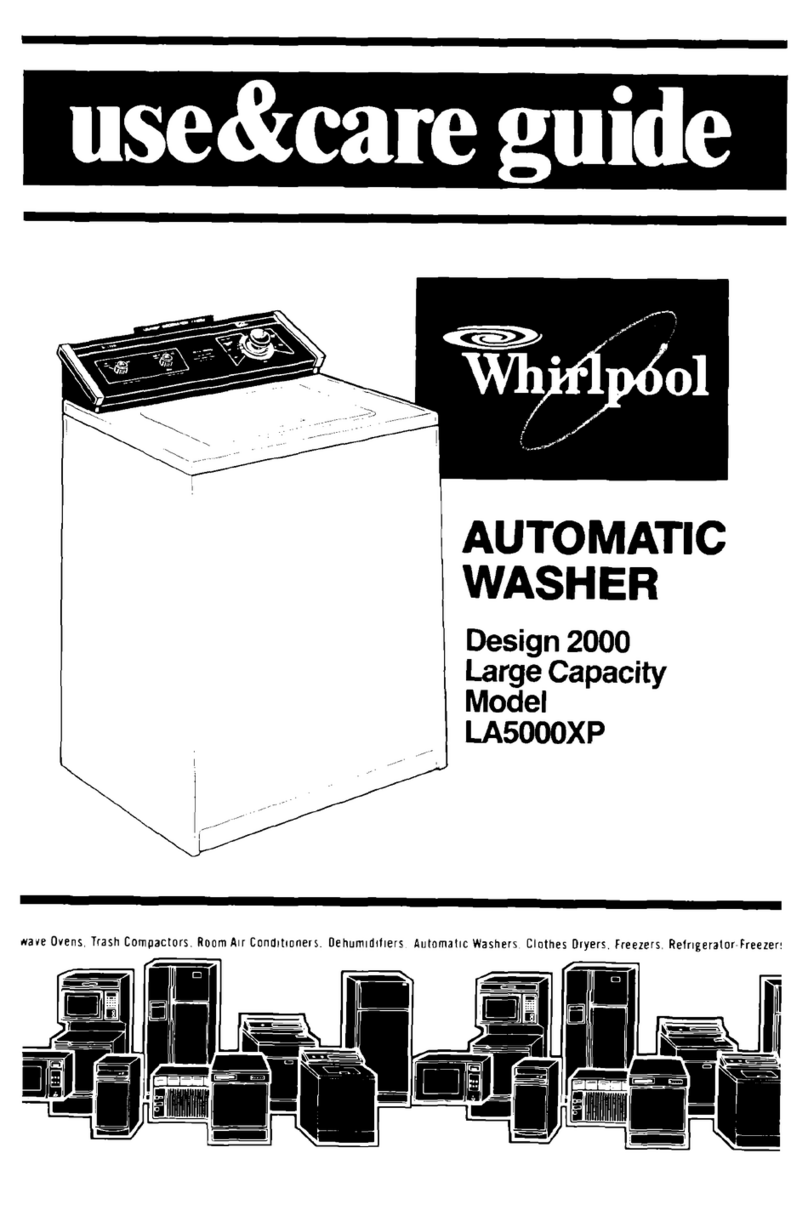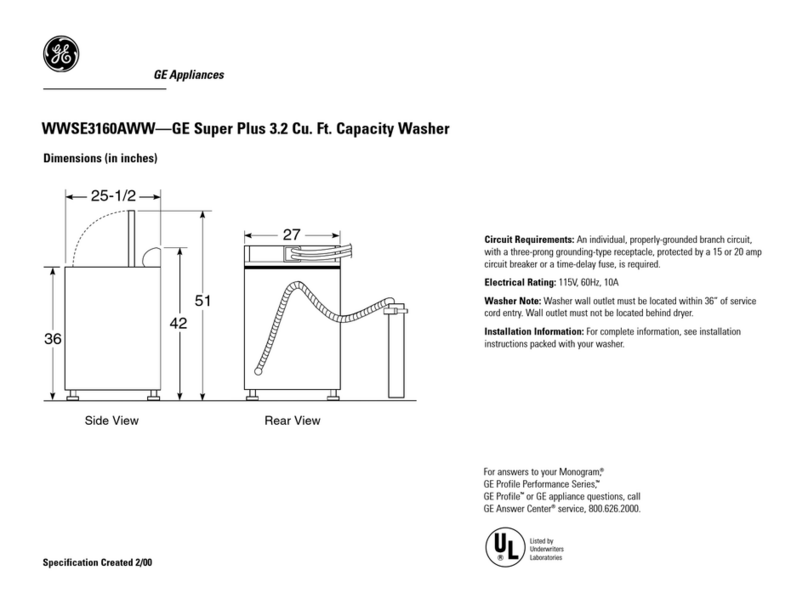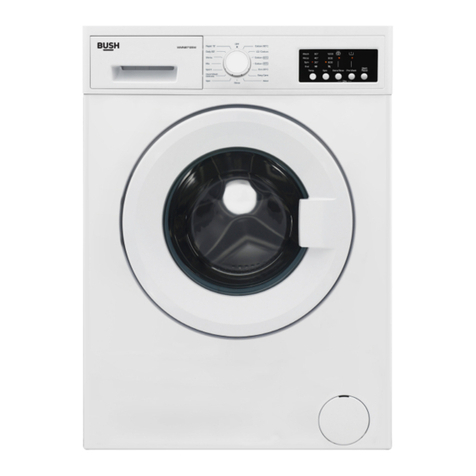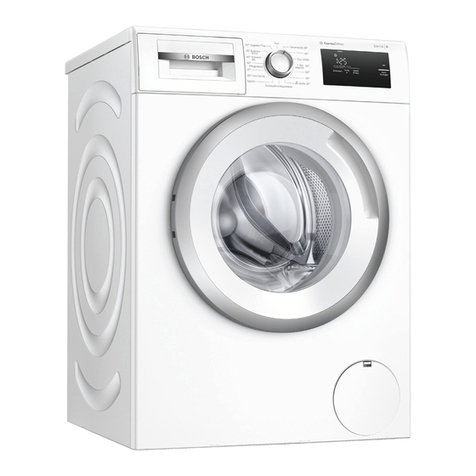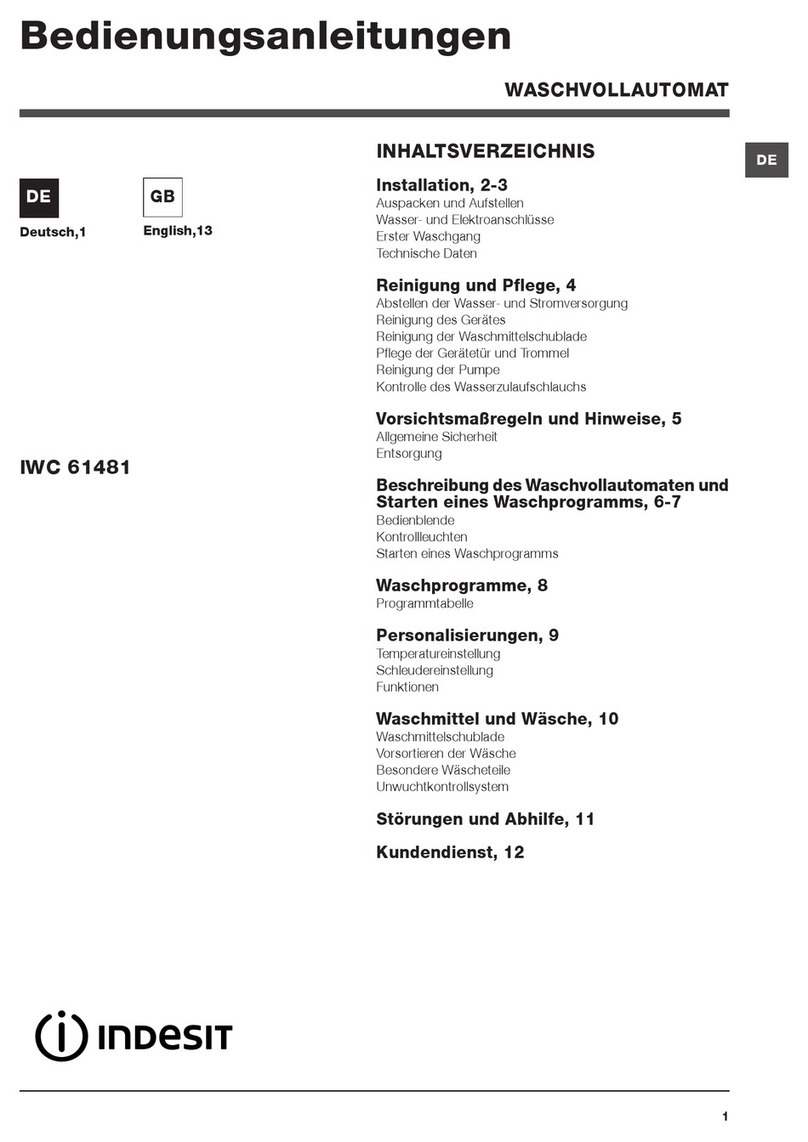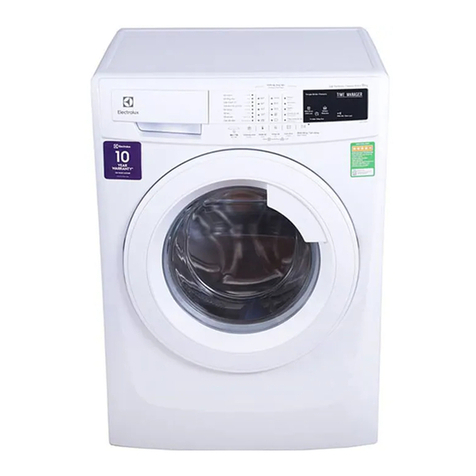
ake care of a solid and horizontal position of the appliance. If the appliance is not
horizontally leveled, adjust the feet accordingly (see “Adjust the feet”).
•Power cord and water hoses may not kinked or squashed.
•The wall socket must be freely accessible.
•Avoid the installation:
Avoid the installation:Avoid the installation:
Avoid the installation:
-
near heaters, next to a stove, direct sunlight or any other heat sources;
at locations with high humidity (e.g. outdoors), as metal parts would be su
ceptible to corrosion under such circumstances;
-in rooms wh
ere the temperature could drop below freezing. Do not expose
the appliance any weather.
-
near volatile or flammable materials (e.g. gas, fuel, alcohol, paint, etc.).
Adjust the feet
Adjust the feetAdjust the feet
Adjust the feet
CAUTION:
CAUTION:CAUTION:
CAUTION:
The feet must never be removed. Do not restrict the floor clearance through carpets,
strips of wood or similar. Danger of heat accumulation!
Danger of heat accumulation!Danger of heat accumulation!
Danger of heat accumulation!
Use the wrench to loosen the lock nuts.
Rotate the feet to change the height. Tighten the lock nuts with the
wrench, if the unit is aligned. The feet must have solid ground contact.
Check with a spirit level whether the appliance is leveled horizontally. If
the unit is not in balance, the feet must be adjusted again.
Water connection
Water connectionWater connection
Water connection
CAUTION:
CAUTION:CAUTION:
CAUTION:
•The
Installation of the water supply must conform to the local laws and regulations.
•The appliance is not
notnot
not suitable for hot water supply.
•
Use the new supplied hose set to connect the appliance to the water supply. Do not
reuse old or used connection sets.
•If
the water pipe is new or long time not used, ensure before connecting to the
water system, that the water is clear and free from contamination.
ake care of a solid and horizontal position of the appliance. If the appliance is not
horizontally leveled, adjust the feet accordingly (see “Adjust the feet”).
near heaters, next to a stove, direct sunlight or any other heat sources;
at locations with high humidity (e.g. outdoors), as metal parts would be su
ere the temperature could drop below freezing. Do not expose
near volatile or flammable materials (e.g. gas, fuel, alcohol, paint, etc.).
The feet must never be removed. Do not restrict the floor clearance through carpets,
Rotate the feet to change the height. Tighten the lock nuts with the
wrench, if the unit is aligned. The feet must have solid ground contact.
Check with a spirit level whether the appliance is leveled horizontally. If
the unit is not in balance, the feet must be adjusted again.
Installation of the water supply must conform to the local laws and regulations.
Use the new supplied hose set to connect the appliance to the water supply. Do not
the water pipe is new or long time not used, ensure before connecting to the


